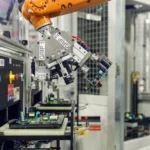In today’s fast-paced construction and business environment, the demand for efficiency, safety, and sustainability has never been higher. From modern office buildings to industrial facilities, organisations are searching for ways to streamline operations, lower costs, and create environments that are both productive and resilient. One of the most effective ways to achieve these goals is through integrated project services, which combine different expertise under a single, cohesive strategy.
Why Integration Matters
Traditional construction and facility management approaches often separate responsibilities into distinct silos. While this method can work, it usually leads to duplication of effort, communication gaps, and higher overall costs. Integration, on the other hand, ensures that design, engineering, and operational functions work in harmony. The result is a smoother process, fewer errors, and faster delivery.
For example, when architectural planning is aligned with engineering solutions, spaces can be optimised for energy efficiency right from the start. Instead of retrofitting systems later—which can be costly and disruptive—designers and engineers collaborate early to achieve long-term performance gains.
Driving Sustainability
Sustainability is a driving force in modern construction and infrastructure. With the UK and many other countries committing to ambitious carbon reduction targets, businesses are under pressure to reduce their environmental footprint. Integrated services play a crucial role in achieving these goals.
Energy-efficient lighting, renewable energy systems, and intelligent building management platforms are most effective when introduced as part of a comprehensive plan rather than isolated projects. For instance, optimising heating, ventilation, and air conditioning (HVAC) systems alongside electrical design can significantly cut energy consumption while maintaining comfort for building users.
Improving Safety and Compliance
Another major advantage of integrated project services is improved safety and compliance. The legal and regulatory landscape continues to grow more complex, especially in areas such as workplace health and safety, fire prevention, and environmental standards. When all disciplines are aligned under a unified strategy, risks are identified earlier, and compliance measures are easier to implement.
This proactive approach not only protects businesses from fines and reputational damage but also creates safer environments for employees and customers.
Technology as a Game-Changer
Digital technologies are accelerating the shift toward integrated solutions. Building Information Modelling (BIM), smart sensors, and real-time monitoring tools are transforming the way projects are delivered and maintained.
BIM, in particular, enables all stakeholders to visualise and coordinate every aspect of a project from the outset. This reduces the chance of costly design conflicts and makes it easier to adjust plans as new information emerges. Once operational, smart sensors can track energy use, predict maintenance needs, and enhance security—all of which contribute to long-term cost savings.
The Role of Expertise
Behind every successful integrated project is a team of highly skilled professionals. For businesses seeking reliable delivery, partnering with experienced specialists is essential. Many organisations turn to mechanical and electrical contractors, whose combined knowledge ensures that all core systems are designed, installed, and maintained to the highest standards. This collaboration minimises delays, reduces costs, and improves overall project performance.
Long-Term Benefits for Businesses
Investing in integrated project services is not just about completing a build—it’s about future-proofing. Companies that embrace this approach often enjoy:
- Lower operational costs due to energy efficiency
- Greater reliability of systems and reduced downtime
- Enhanced adaptability for future upgrades or expansions
- Improved employee productivity in well-designed, comfortable environments
- A stronger reputation for sustainability and innovation
Ultimately, integration provides businesses with a competitive advantage. By aligning design, construction, and operation, companies can create spaces that deliver lasting value, both financially and environmentally.
Final Thoughts
The future of construction and facilities management lies in breaking down silos and embracing integration. Businesses that adopt this mindset not only achieve efficiency and cost savings but also position themselves as leaders in sustainability and innovation. In a competitive landscape, this holistic approach is not just an option—it is a necessity.


